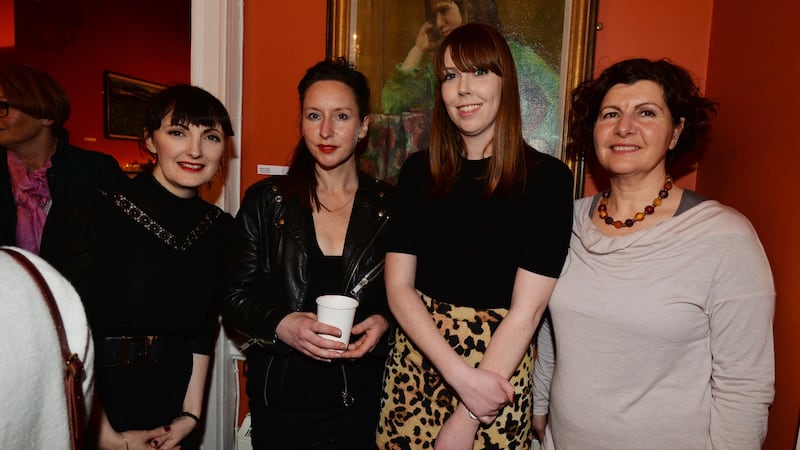During the journey the reader takes across the internal planes of various female narrators (or maybe just one) in Joanna Walsh’s Vertigo, the eye is drawn again and again to fabric and clothing. The psychic landscape of these women’s experiences are preoccupied, often, with style. The external self is juxtaposed, through fashion, with the internal. In many ways, Vertigo is as much about the tactile world of the feminine experiences as it is about emotion. As much about how we decorate the body as it is about the body.
“Preoccupied with clothes” is a harsh dismissal to place on a woman, as though, absurdly, style is the enemy of intellect. It is too easily a negative characteristic to apply, inferring shallowness, vapidity. In Fin De Collection, the maiden fragment of the text, the narrator is buying a red dress in Paris, on instruction from a friend, because she is leaving her husband. This advice is both deeply classic and quite modern self care. It’s not treated as a frippery, but rather as holistic instruction. The narrator’s short, splintered journey through Paris is distinctly unglamorous, mired in low-key anxiety, in otherness.
The red dress in this fragment is unfindable, too gaudy a thing for the chic of Paris. Walsh delivers a line so true of style here, “Parisians wear grey, summer and winter – they provide their own colour.” This speaks to elegance, but also to a quiet dignity.

In the titular fragment, Vertigo, Walsh again greets us with clothing, but this time rather than a talisman of recovery, the pink skirt is a first mistake. A first sacrifice. The sadness of a skirt that does not suit you is tangible. An idea of yourself that will hang in your wardrobe or lie in a drawer, untouched, unrealised – unrealisable. The daughter in this piece is 12, all potential power, all first mistakes unmade. The skirt does not appear again, rather appears then disappears, folded away – that first sad metaphor overshadowing the rest. The story is peppered with khaki T-shirts, however, hairpins and ends with the unpacking of a suitcase. How the washing and ironing of clothes feels like a relief.
In Young Mothers, the transformation of femininity to functionality surfaces, like searing truth. In motherhood, the objects that surround a woman change shape as she changes shape. I recall my own mother in cosy 90s fleeces during my childhood and was struck by the accuracy here. “Fleece was warm and stretchy for growing bodies.” The woman’s body here and the child’s body intersect, through fabric, irrevocably linked even after birth. They become the same. “Colours were so bright so our children did not lose us, so we could not lose each other, or ourselves, no matter how hard we tried.”
This is a grim counterpart to the sleek charcoals of Paris, the liberation of a failing marriage.
In Claustrophobia, the narrator’s mother does not take off her apron to eat. This matters. The mother’s wardrobe contains many outfits for occasions – hundreds. How many unworn, how many like the pink skirt -– selves unrealised or realised only for a moment then packed away. The apron, however, remains – a symbol of the home, of the kitchen, of labour. The narrator’s minimal jacket and jeans scream the hard line from just a page before, “Do you know how hard I worked not to be you?”
It is in Claustrophobia that clothing becomes oppressive. Sisters-in-law in cardigans, “grown over with a fungus of secondary sexual characteristics, bristling with embroidery and drooping with labial frills”. The direct comparison of lace to labia is striking, sickening – almost iconic. Bracelets clack off tabletops, sad buttons with gold rims. A nausea in this fussiness.
Later in the work, in Relativity, again we are greeted with a reflection on style. Style as a metaphor, style as our identity in denim and cotton. The narrator’s clothing in this story is restrained: it is clothing informed by an understanding of the body. There is wisdom in the narrow neatness of the narrator’s choices, whereas there remains young hope and wild aspiration in her daughter’s bangles and lace scarf. Still, motherhood here manifests itself in a callback to Young Mothers – the narrator will not fall over if required to run in her shoes.
Shopping here rises again, far flung from the opening passages on the Champs Élysées. Local charity shops the scene, still seeking something. The mother arrives in a pantry of shades, mint, peach, blueberry, cream, Walsh calls her “edible”. Three generations of women in clothes, expression and self in three pages.
Finally, in Drowning, this horror story, the last outfit on the runway exposes the most in the entire book. The bikini. Here, the narrator experiences true vulnerability when we encounter the body most directly: though the narrator has poise and confidence in her form, she is still undressed in the most unforgiving of elements as she meets the water. This is not the red dress, the pink skirt, the neat, chic ensemble – this is the body, barely protected.
I shoot Walsh a message on Twitter, to daringly ask her what she is wearing. She replies, generously and without hesitation, “Right now? I’m wearing vintage 90s Levis (engineered with twisted seams), a very old white T-shirt with holes & black bra underneath that shows through as it’s washed nearly transparent, a See by Chloe blazer I got from a sample sale that’s dark navy with tiny jacquard beige/red ‘knots’ scattered as though they were dots, white Bensimon plimsolls, no socks.”
So much of the female experience is inexorably linked to our physical forms, and further, to how we present ourselves. How we dress. So much of our social worth gauged by our corporeal, our fabric. In Vertigo, Walsh not only faces this head on, but revels in it – permitting clothing importance, analysis and, most importantly, worth. The respect Walsh treats clothing with is a poised reclamation – as radical.

















